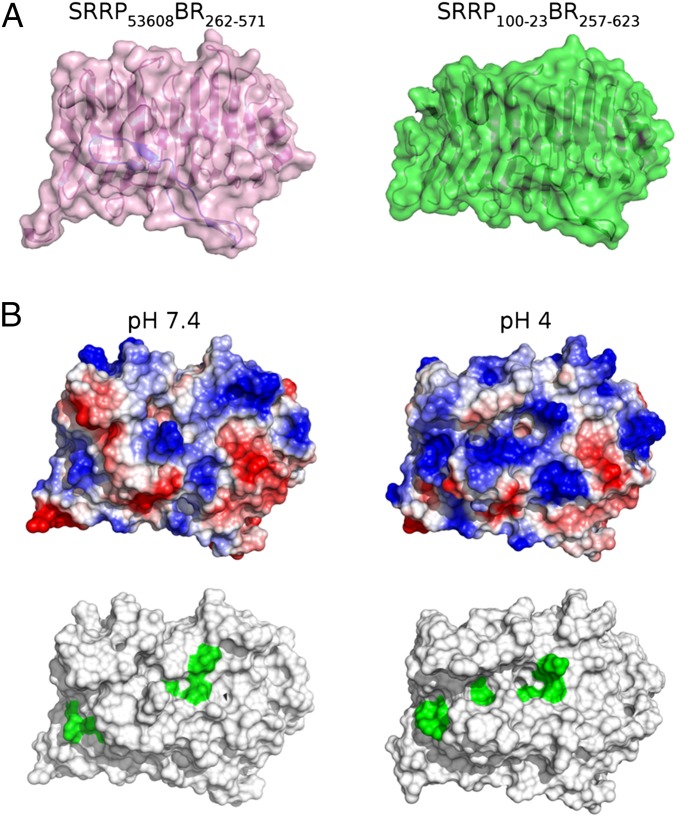Fig. 4.
The pH-dependent conformational change affects the PuBS, as predicted by MD simulations. (A) Combined surface and cartoon models of SRRP53608BR262–571 (pink) and SRRP100-23BR257–623 (green). (B) Surface representation of SRRP53608-BR262–571 at pH 7.4 and pH 4.0 in the same orientation as in A, showing surface electrostatics (Upper) and surface-exposed putative binding residues (Lower, green). At pH 4.0, PuBS exhibits a more positive electrostatic potential as well as an open conformation that exposes a greater number of putative binding residues to the solvent. Coordinates were obtained from representative frames of each respective MD trajectory (Methods). Surface electrostatics were calculated in PyMOL and are color-coded as blue (positive), white (neutral), and red (negative).

